Have you ever stood in the cereal aisle at the grocery store feeling overwhelmed with the number of boxes in front of you? Do you sometimes spend the first half-hour of your workday figuring out what task to begin with before actually doing anything?
If these scenarios sound familiar, you’ve probably experienced choice paralysis.
Choice paralysis reduces your productivity, lowers the quality of the decisions you make, increases your impulsivity, and lowers your self-control.
Thankfully, you can manage choice paralysis with ease.
In this article, we outline what choice paralysis is, explain where it comes from, and teach you how to stop it from zapping your productivity.
What is choice paralysis?
Choice paralysis — sometimes called analysis paralysis or decision paralysis — occurs when a person spends all their energy making a decision. After all that deciding, they no longer have the energy to act on the decision they make.
Choice paralysis can affect individuals trying to decide what to wear, what to work on, or which car insurance is best. It can affect groups when trying to decide on the direction of a project, what marketing tactic to take, or which restaurant they should visit.
The theory behind choice paralysis is that the more choices or options you have, the more stressful it is to make a decision — and the less satisfied you’ll be with the result. You have a higher chance of regretting the option you eventually go with or believing you chose the wrong option. This is known as the Paradox of Choice.
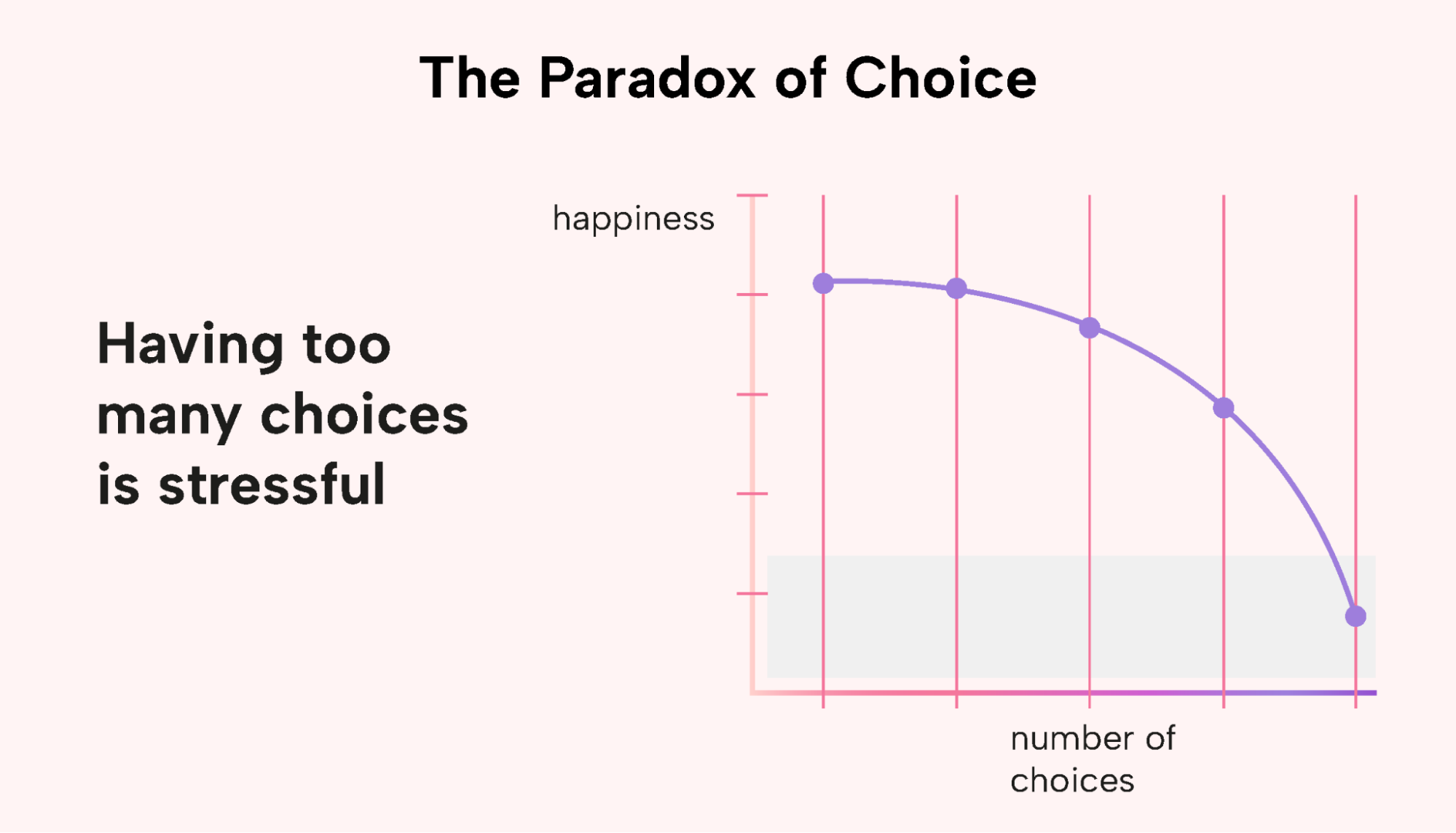 |
Decision-makers often revert to choosing the simplest and most obvious choice to avoid prolonging the stress of needing to decide. This default option isn’t always bad, but it can cause the person to miss out on key information and automatically cut off creative thinking and problem-solving.
How to identify choice paralysis
Choice paralysis can have a subtle but devastating impact on your performance at work. If you’re unsure whether the choice paralysis bug has bitten, look for the following signs in your behavior:
- Procrastination as you avoid making the decision. You may find yourself avoiding the issues and all related topics entirely.
- Overthinking every available option but doing nothing about the information you gather.
- Decreased efficiency and productivity as you freeze in analysis mode instead of acting.
- Less creative thinking as you choose the default option because it’s familiar and requires the least amount of cognitive effort.
- Decreased self-control and self-discipline because your discipline gets used up every time you choose to do a difficult or unpleasant thing.
Related: Efficient vs. Productive: Cracking the Code in the Workplace
Is there a difference between choice paralysis and analysis paralysis?
No. Choice paralysis, analysis paralysis, and decision paralysis all refer to the same phenomenon.
What causes choice paralysis?
You may experience choice paralysis in the following situations:
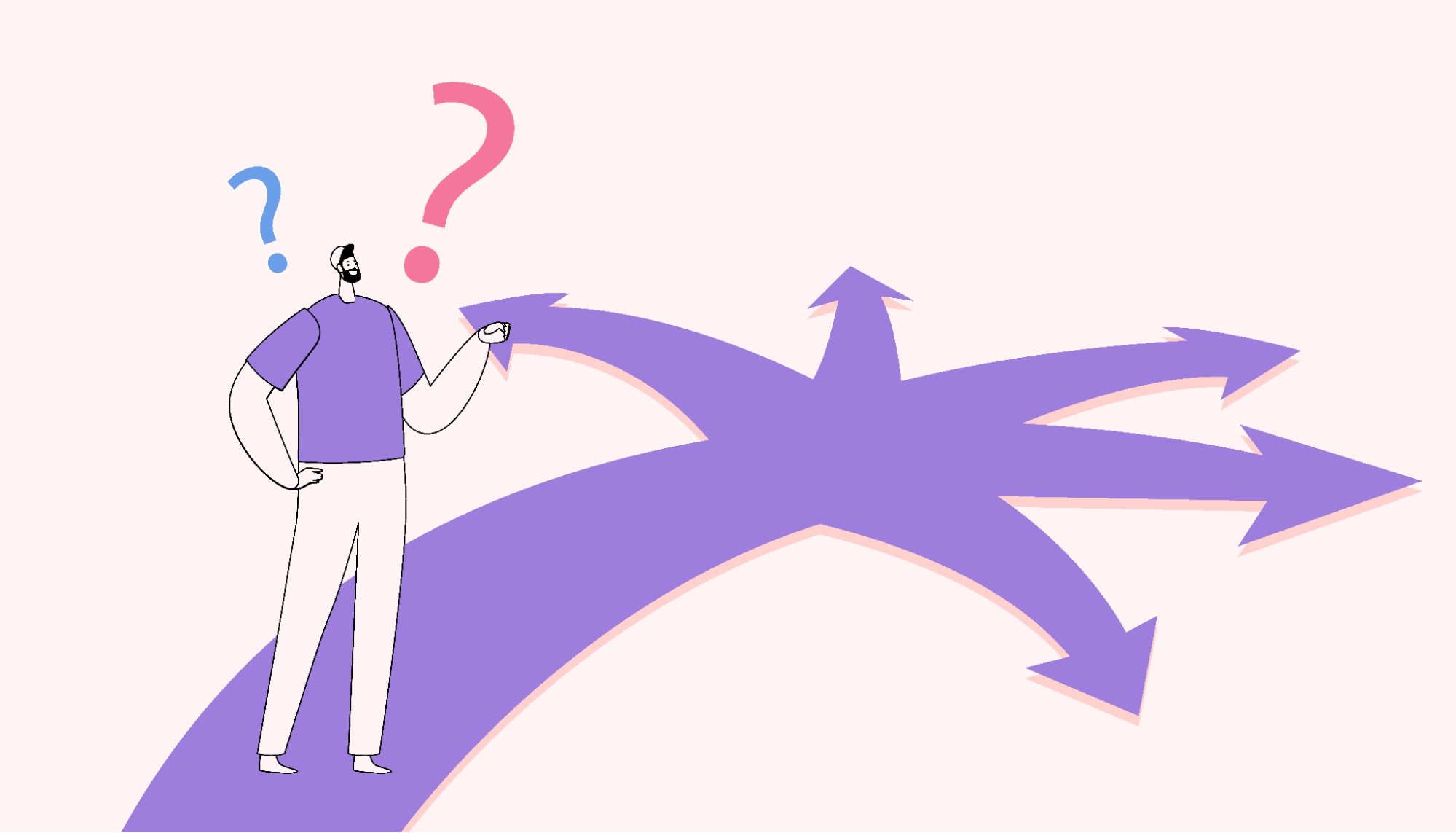 |
- When multiple options are available. The “burden of choice” issue is a phenomenon where a decision-maker becomes overwhelmed with researching every available option. Being presented with an abundance of choices can stop you from acting as you research every option and become overwhelmed with information.
- When you’re scared of making the wrong choice. It’s natural to want to choose the best option for yourself or your team, but this desire can quickly turn into anxiety about making any decision besides the best one. You’ll need to overcome perfectionism to push yourself toward action.
- When you’re scared of regretting your choice. Fear of regret is a powerful demotivator — and one of the main causes of choice paralysis.
Choice paralysis in action: What the research says
Choice paralysis has been studied extensively for many years. In particular, researchers have looked at how our capacity for making quality decisions changes as a result of previous difficult decisions, cognitive exertion, and the number of decisions we’ve already made.
The following studies have been pivotal in determining how we process decision-making:
1. Consumers choosing jam
The jam study was one of the first studies that analyzed and quantified the effects of choice. This research laid the foundation for understanding the way choice paralysis affects our decision-making.
In the jam study, consumers were presented with a limited (6) or extensive (24) selection of varieties of jam to sample and purchase. And while initial interest was higher for the extensive display, the limited display resulted in a higher number of sales.
Barry Schwartz, one of the thought leaders of the Paradox of Choice, proposed that instead of being excited by a large number of options, we become weighed down with the task of finding the perfect solution. In many cases, decision-makers choose to conserve their energy and make no choice rather than taking the time to analyze every available option and choose the best one.
The more options you have available, the less likely you are to make a choice.
2. Doctors prescribing antibiotics
The next study we’ll look at involves how decision fatigue affects complex analysis and decision-making in doctors.
In a study on the time of day medication prescriptions are made, researchers found that doctors were increasingly likely to prescribe antibiotics as the day went on. As doctors made more and more decisions throughout the workday, they began to experience decision fatigue — a reduction in their capacity to make difficult, complex decisions.
The result? Defaulting to the choice that requires the least amount of mental effort: prescribing antibiotics.
The more choices you make, the more likely you are to choose the default option.
3. Banks approving loans
Our final study also deals with decision fatigue, but this time in a finance setting.
In a study on the cost of decision fatigue, researchers found that banking personnel were increasingly likely to decline loan applications as the day went on. Typically, the banker would analyze a variety of factors to determine whether or not the client was likely to repay the loan. But as decision fatigue set in, they spent less time weighing up these factors and jumped to the default option: rejection.
If these loan applications had been analyzed equally, the bank would have gained $509,023 of extra revenue for that month. This indicates that even if we know that choosing the “default option” will lead to negative outcomes, we’ll do it anyway.
The more choices you make, the lower the quality of your choices.
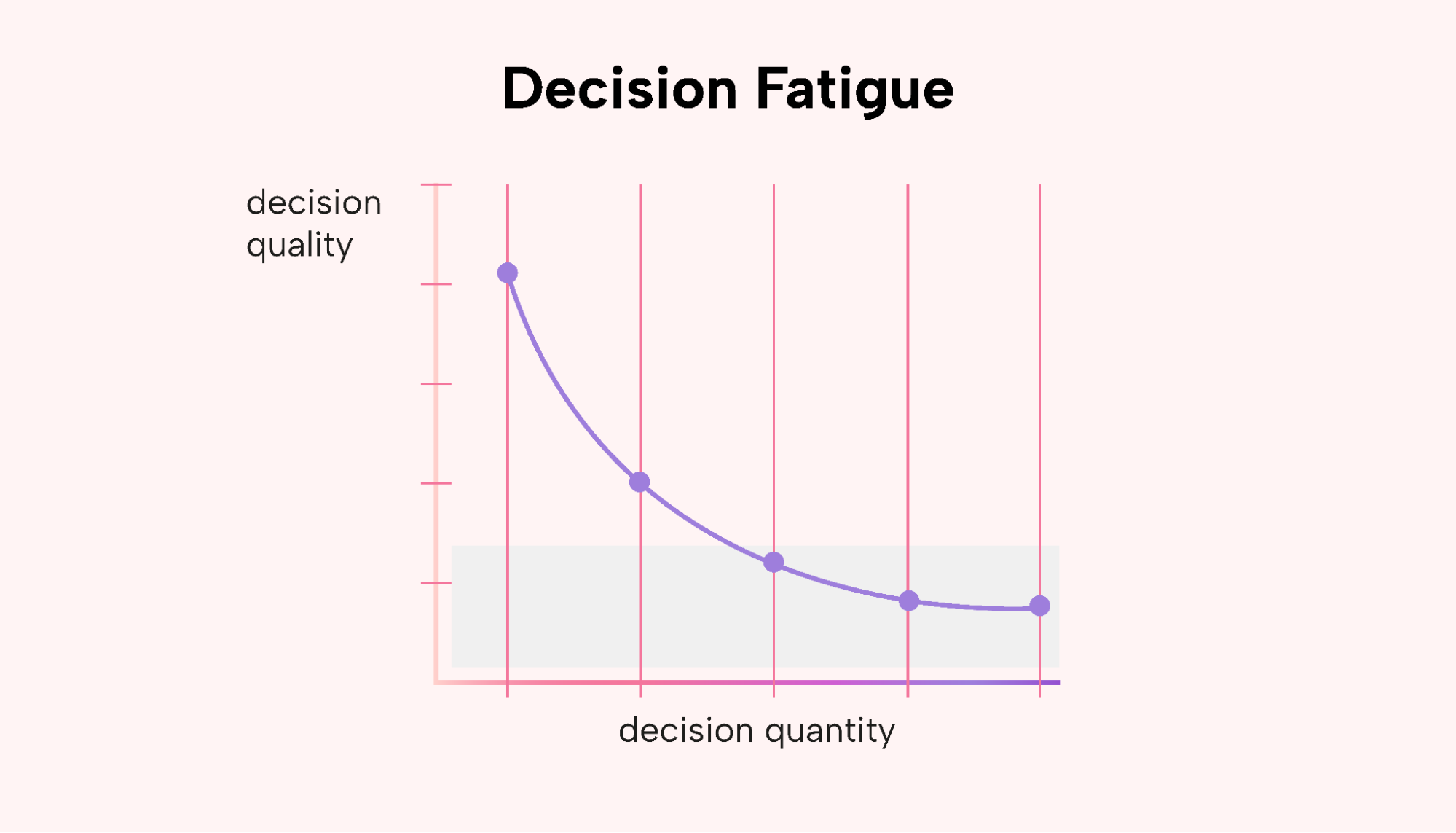 |
How to overcome choice paralysis at work
If you’ve noticed choice paralysis slowing you down throughout the workday, you’re in the right place.
Overcoming choice paralysis isn’t difficult when you know how to address it. Use the tips below to put an end to analysis paralysis, lower your chances of experiencing decision fatigue, and unlock sustainable productivity.
1. Recognize the signs of decision fatigue
Learn to recognize the signs of decision fatigue so that you know when to step back, take a breath, and change tracks.
When you’re stressed about making a decision, you have a harder time making that decision. This was clearly illustrated when 32% of US adults struggled to make basic decisions during the stress of the COVID-19 pandemic.
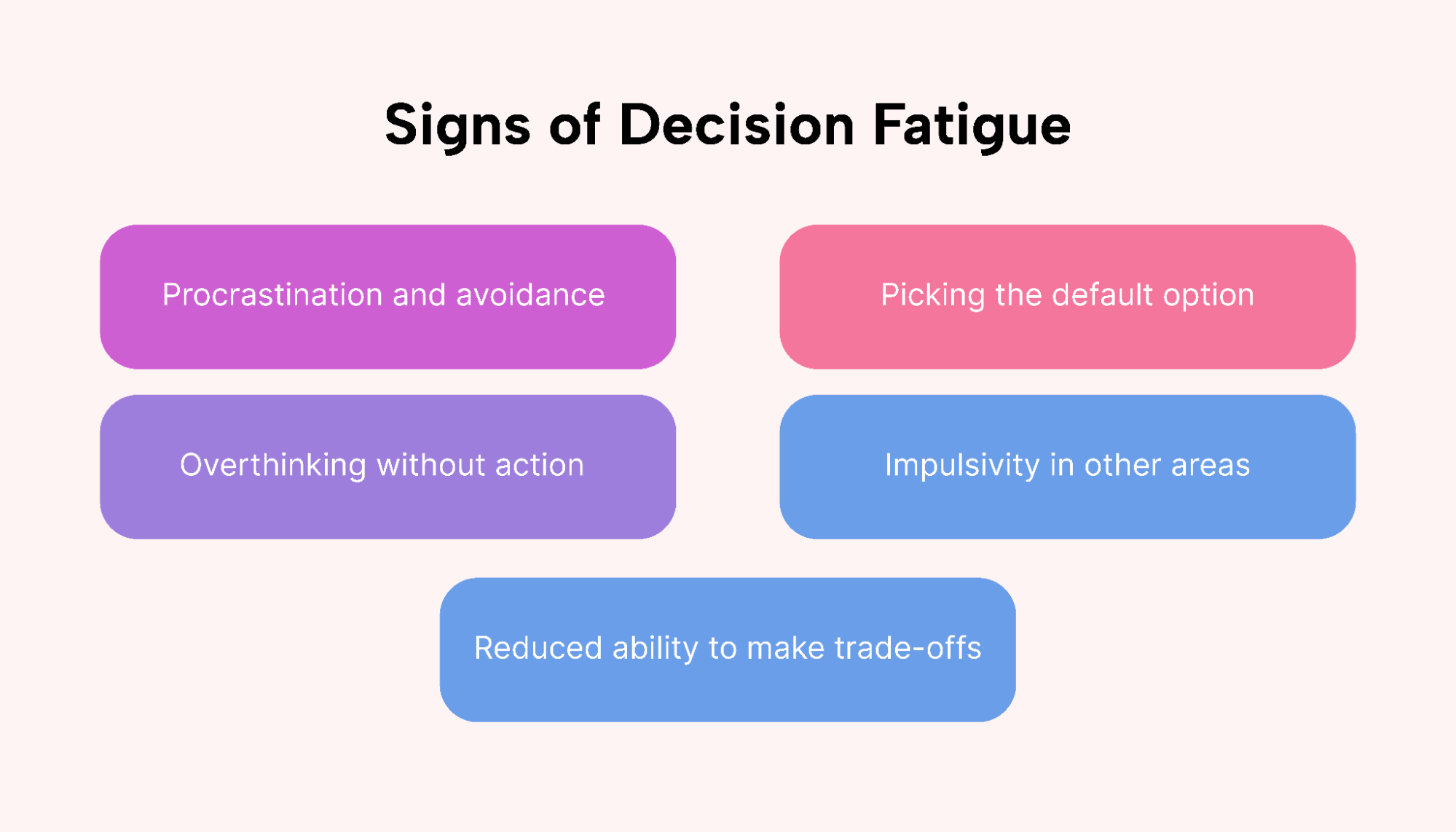 |
If you’re struggling to make a decision, simply acknowledging what’s affecting you can help you move past it. And becoming familiar with the signs of decision fatigue makes it easier to move on from a tricky decision-making process.
2. Set a deadline for decision-making
If you’re stuck in paralysis by analysis, the best thing to do is to take a step back from the problem for a set period of time.
Making big, important decisions when you’re overwhelmed and tired usually leads to worse choices. Instead of working yourself up even further, set a time or date when you’ll come back to the problem. Then, make a conscious decision to ignore that problem for now and focus on another task completely.
Another great way to combat choice paralysis is to limit the amount of time you allow yourself to mull over a problem. For small decisions, you could set the limit to 30 seconds. For very important decisions, you could give yourself a week to research your options and weigh their pros and cons.
For this tip to work, you need to know how to rank the importance of a decision. If you aren’t sure whether a decision is important enough to warrant major time and research, ask yourself the following questions:
- Does this decision affect my long-term goals in a meaningful way?
- Does this decision affect many people besides myself?
- Will this decision matter in a week’s time? A year’s time? Five years’ time?
- Have I faced a similar situation in the past that I handled well?
As you work through these questions, it’ll be clear whether the situation deserves a large amount of thought and time or you’re entirely overthinking it.
3. Use digital tools to reduce your mental load
Reducing your cognitive load can help reduce your chances of experiencing decision fatigue. Digital time management tools remove hundreds of little decisions from your workday, saving your decision-making capacity for more important things.
The Motion Calendar is a powerful tool that uses AI to plan your week for you. You simply input your meeting times, to-do list, and priorities for different tasks, and Motion creates a personalized and optimized plan for you to follow.
Motion also automatically adjusts your schedule to accommodate new plans or emergencies, saving you the mental load of shuffling your plans manually.
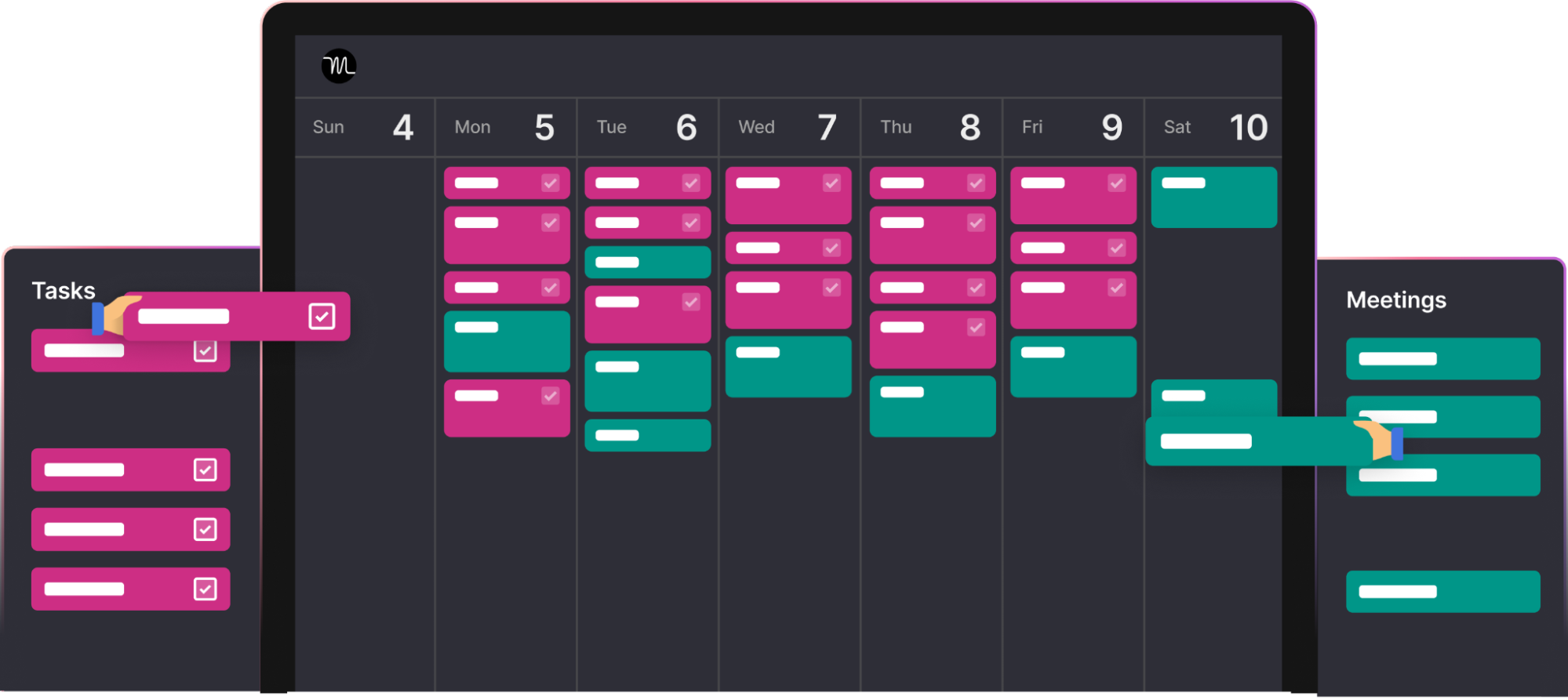 |
Motion’s task manager prioritizes your tasks for you based on their deadlines and urgency. You don’t have to figure out what’s most important at any given time. Instead, you can jump to being productive.
4. Keep your available options narrow
Limit your available options right from the start of your decision-making process, and continue to narrow them down as you move closer to making your final decision.
Keeping your options narrow reduces the total number of decisions you need to make. And the fewer decisions you have to make, the lower your chances of falling victim to decision fatigue. As you gather information that will inform your final choice, automatically remove all options that the information disqualifies.
Don’t ask too many people for advice. Getting an outsider’s perspective and an objective viewpoint regarding your situation can help you make informed decisions. However, seeking advice from too many people is counterproductive because you’ll end up stuck with information overload and choice paralysis.
5. Practice making quick decisions in everyday life
Being decisive is one of the best ways to combat choice paralysis. Practicing decisiveness means learning to make quick decisions and then following them through to the end.
You could practice decisiveness when choosing what to have for dinner or which route to take on the way home from work. As you begin doing this for easy and low-stakes decisions, you’ll train your decision-making instincts to be reliable in stressful and high-stakes situations.
In addition to making decisions quickly, it’s important to commit to whatever option you choose. As we explored earlier in this article, fear of regret plays a major role in choice paralysis. Don’t let yourself get caught up worrying if you made the wrong decision — instead, make a plan and run with it.
If you want to avoid choice paralysis, you need to learn to accept whatever option you choose and avoid wasting time or energy wishing you’d made a different choice. Once you’ve made up your mind, stick with that option and use your problem-solving skills to work through any issues that arise as a result of that choice.
6. Practice predicting long-term outcomes
When you’re aware of potential long-term consequences, you have an easier time making an informed decision. Practice predicting the effects of your plans and decisions so that you become adept at seeing the pros and cons of the available options.
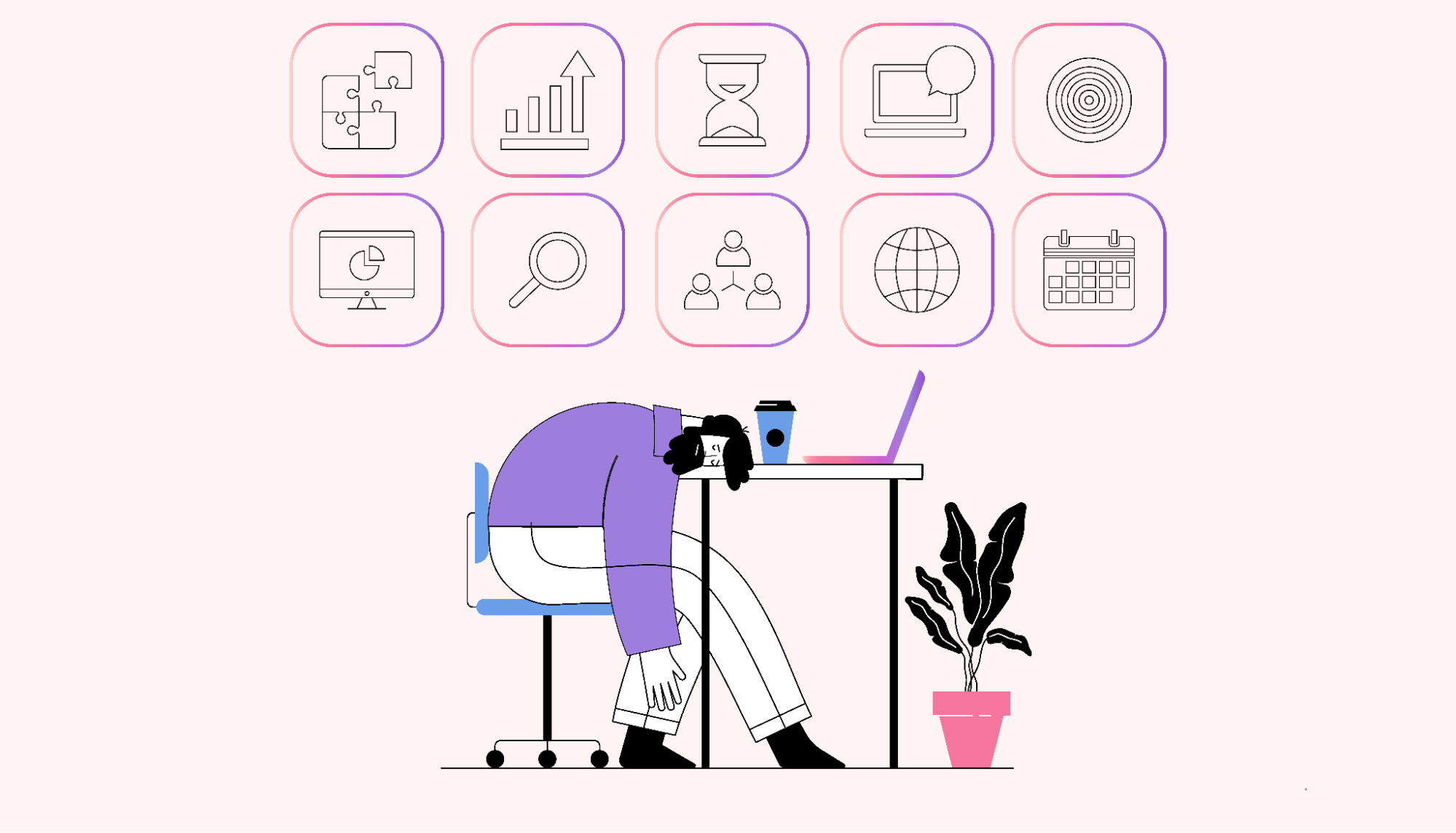 |
7. Delegate when necessary
In rare cases, someone else can make tough decisions for you. If you still find yourself paralyzed with indecision after following the above steps, it’s okay to ask for help or delegate the decision-making entirely.
For work situations, turn to colleagues or your direct superior and ask them for guidance or advice. It can be helpful to ask them how they came to their decision so you can mimic that process in the future.
While delegation has many benefits, avoid abusing the assistance of the people around you. Try to make the majority of your decisions alone, and only delegate the decision-making when absolutely necessary. This could be if you don’t have the authority, resources, or expertise to make a decision or you’ve spent too long stuck on a decision.
Motion: The ultimate tool for managing choice paralysis
Choice paralysis can happen to anyone, and its effects go deeper than many people realize. But with the right tools and understanding, you can beat it for good.
Motion’s AI-powered scheduling tool removes hundreds of small decisions from your day, reducing your cognitive load and leaving choice capacity open for high-stakes decisions. And instead of needing to adjust your calendar every time an emergency comes up, Motion does the heavy lifting for you.
If you’re tired of falling prey to decision fatigue and ready to get 25% more done every day, get started with Motion.

![How to Overcome Choice Paralysis [2023 Guide]](/cdn-cgi/image/onerror=redirect,width=568,height=325,format=webp/https://cdn.sanity.io/images/4jvom4yf/production/65ce3e1953dcfdf375d8c00ccafc1512e385ca9d-1999x1143.png)



